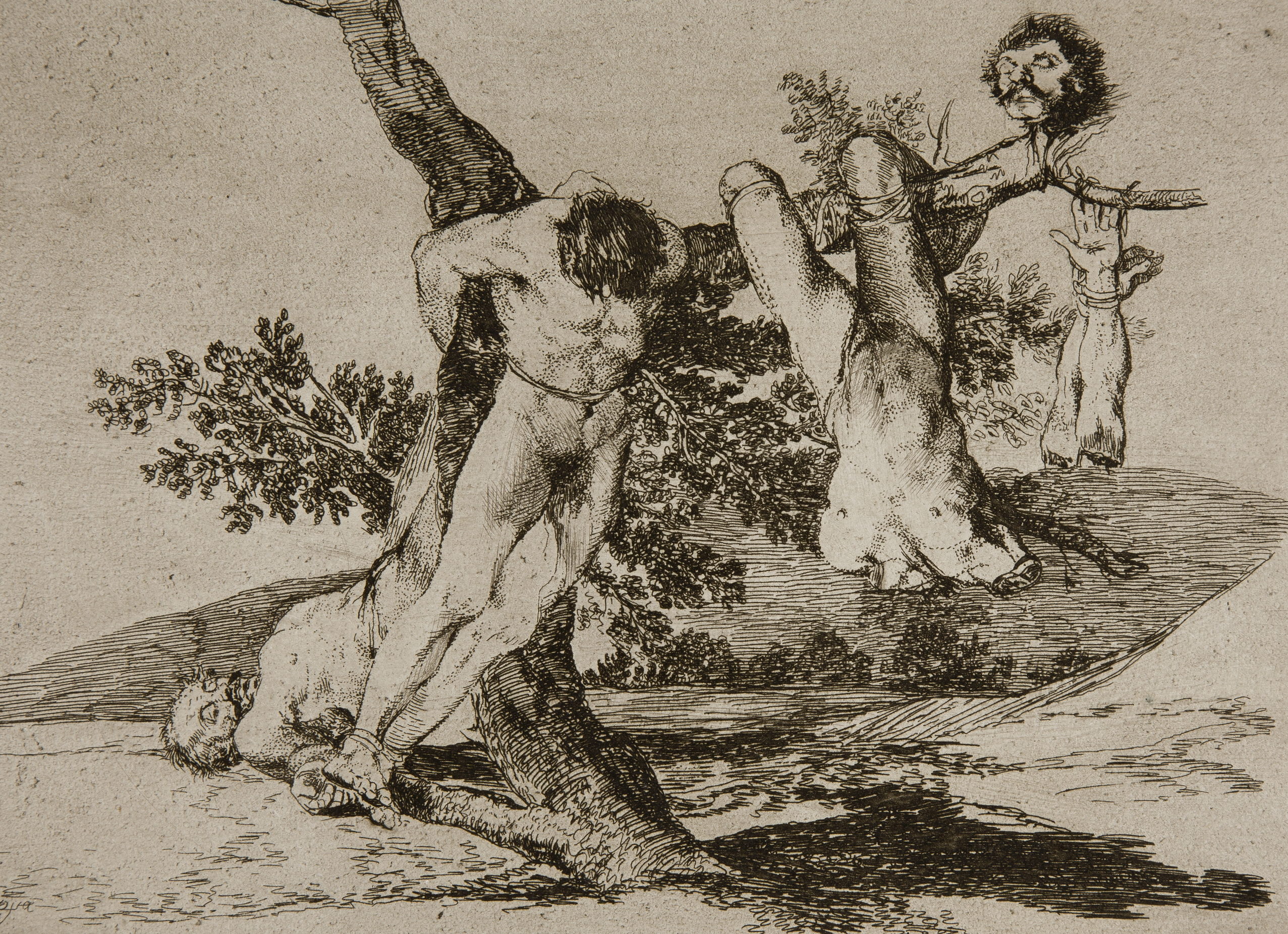The Cult of the Sword
by Travis Diehl

Francisco Goya. Grande hazaña! Con muertos! From Los Desastros de la guerra. Etched c. 1810–20; published 1863.
Four walls, four corners, and the war starts over. In Tanto y más (So Much and More), the velvety black hair and gaping mouths of the dead meld with the hatches of a shadowy hill. In Se aprovechan (They Take Advantage), a pair of scoundrels strip the shirts from two dead soldiers, whose page-white bodies slump and recline like chiseled nudes. Goya’s aesthetic problem is also a moral one: how to represent all these damaged bodies? It’s likely that the aging Goya never saw a battlefield, but pieced together his scenes from reports and renderings, composing his image of war’s waste and futility by a formalism of corpses. In this he goes further than Mathew Brady, the Civil War photographer who thought nothing of recomposing bodies on the battlefield of Antietam. Para eso habeis nacido (For This You Were Born), reads the acid caption on an etching of a man vomiting onto yet another clump of dead. It doesn’t get much worse — until, indeed, Esto es peor (This Is Worse) depicts a man impaled on a tree branch. Yet this most grisly scene is also the clearest statement of Goya’s underlying classicism: the condemned man’s twisted and dismembered body follows the posture and proportion of the Belvedere Torso. Another etching from the same period, adjacent in the Pomona hanging, is Grande hazaña! Con muertos! (What a Great Deed! With Corpses!), a picture of two naked, butchered men, their parts tied to a tree. Goya’s print deplores the deed, as do all the rest. But the notion of classical greatness seems sincere. To hack off the limbs of a human being is violence against a humanist ideal — the Enlightenment project of self-determination that the Spanish partisans fought for, and their king betrayed.
Two centuries on, Goya’s war has now been forgotten, but the question of who decides who lives has only taken new forms. Three recent videos by the Canadian digital artist Jon Rafman, on view at Sprüth Magers’s LA gallery alongside vintage psychedelic films by Stan VanDerBeek, use the latest in prosumer CGI and VR to render lesser versions of that dire Napoleonic formalism. In the video Open Heart Warrior (2016), which unfolds across three flatscreens, panoramic views of fantastical rendered landscapes — rustling woods, imposing cliffs — melt or bleed into scenes of video game carnage. A Himalayan sunset burns away into the image of a bloodied face, then two bodies under sheets, then a skinless corpse, possibly human, possibly not. The camera pans around exploding bodies frozen in midair. The scenes recall the few of Goya’s etchings that imagine the exact instant of disaster — particularly Estragos de la guerra (Ravages of War), which pictures the moment a shell lands on a house, white bodies and nightgowns flashing in a hairy field of black, a woman denuded in the rubble, still clutching a child. Yet if the job of extrapolating war’s horrors once fell to artists, today’s conflicts almost depict themselves.
The full article is available in Even no. 7, published in summer 2017.